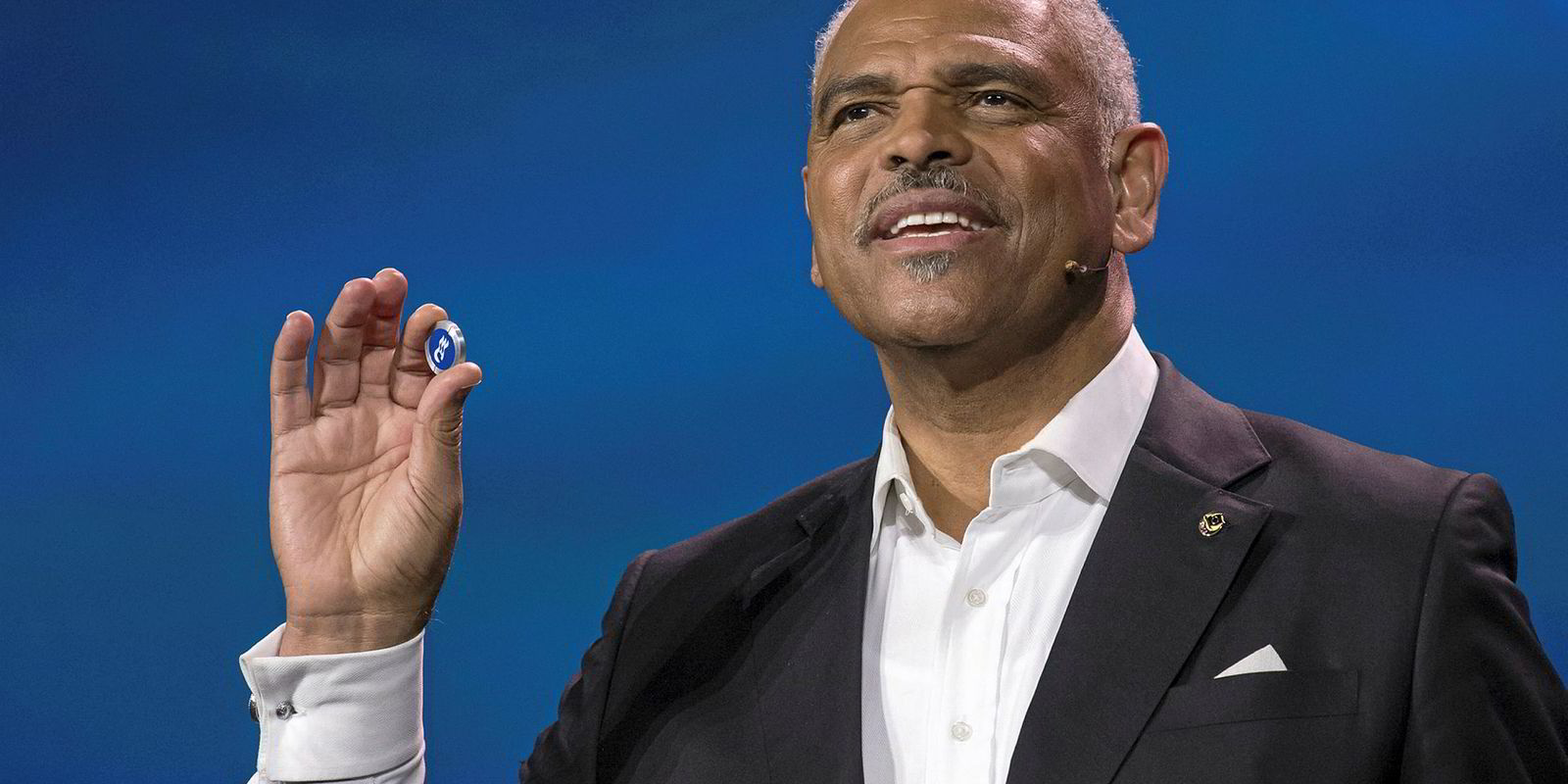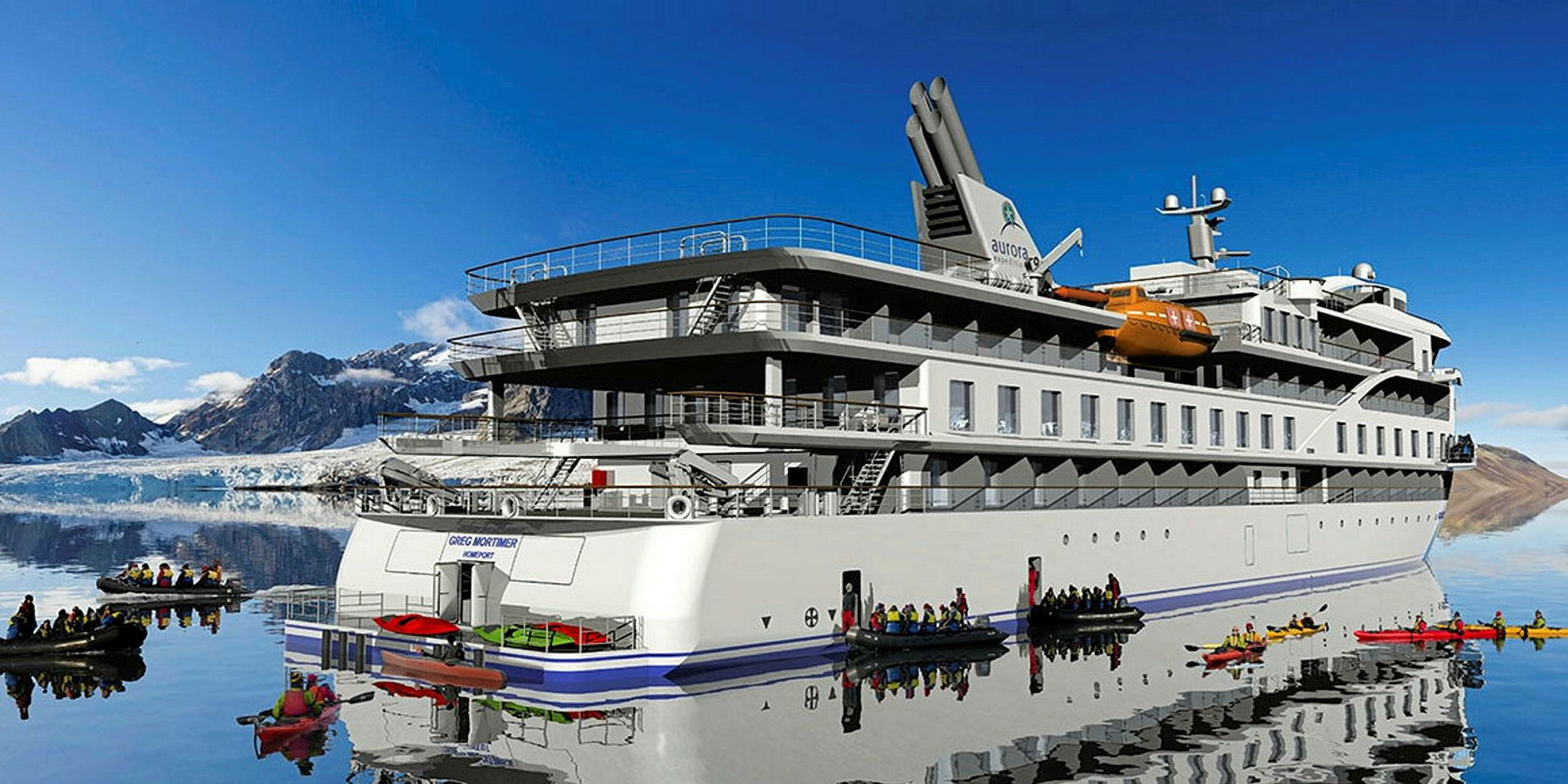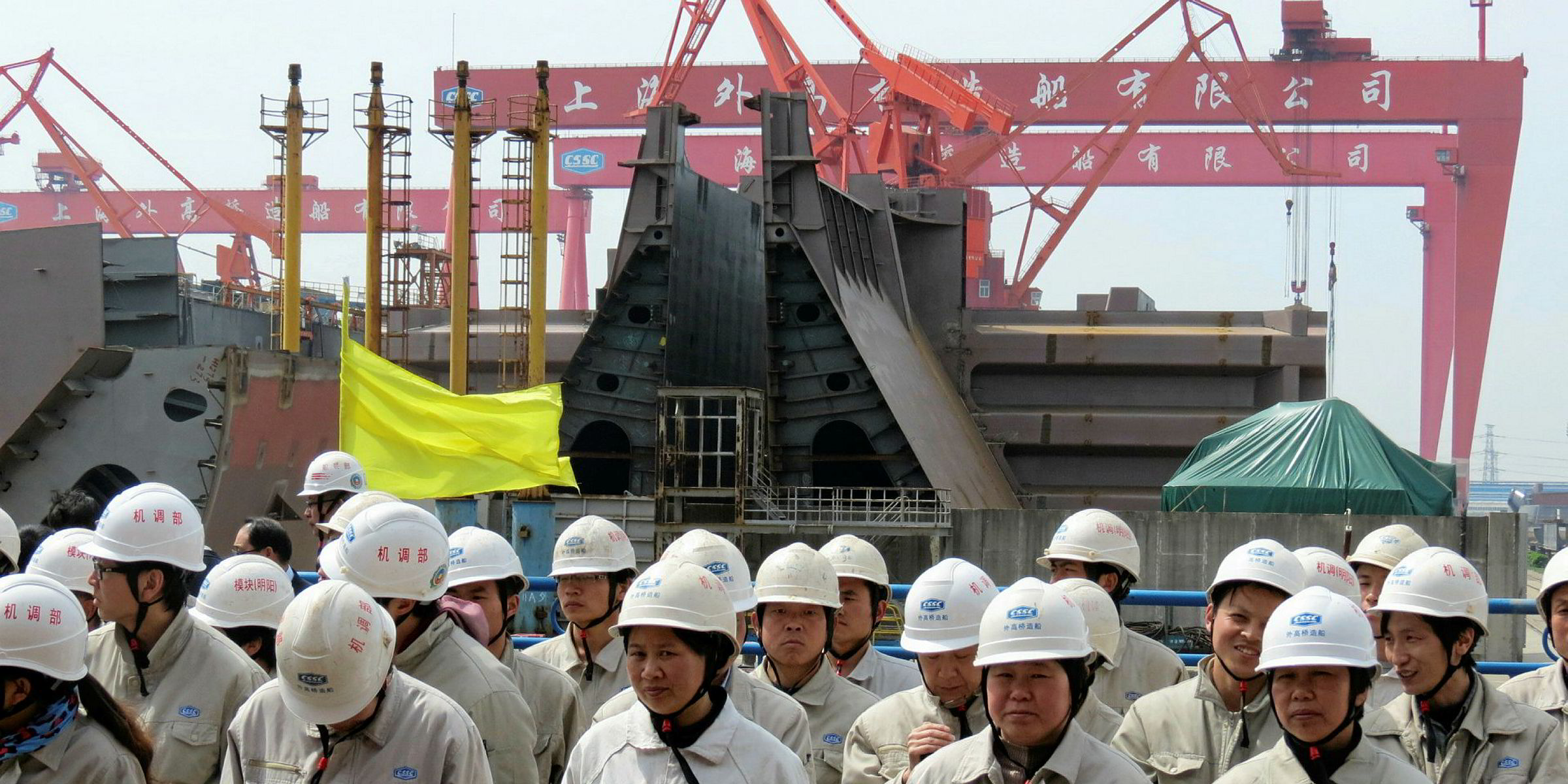The challenge facing China in establishing a foothold in the potentially lucrative cruiseship market differs greatly from Japan’s Mitsubishi Heavy Industries (MHI)’s ill-fated earlier assault on the sector.
With slots at Europe’s major cruiseship yards virtually sold out for the next four years and deliveries even scheduled into 2024 and 2025, focus has switched to China.
Carnival Corp has pioneered the move by signing a memorandum of understanding with China State Shipbuilding Corp (CSSC) to build a series of Vista-class, 133,000-gt vessels at Shanghai Waigaoqiao Shipbuilding (SWS) in collaboration with Italy’s Fincantieri.
Carnival president and chief executive Arnold Donald says this yard was chosen because the company could not find any building capacity at facilities in Europe or elsewhere.

However, Paolo Moretti, executive vice president of marine at Italian classification society Rina, says circumstances differ considerably to MHI’s troubled construction of two 3,268-berth luxury vessels for Carnival’s AIDA Cruises. The Japanese yard incurred exceptional losses exceeding $1.5bn as a result of cost overruns and delays.
Moretti says this was despite Japan being a very advanced shipbuilding country. Carnival and Fincantieri will use AIDA’s experience with MHI in tackling the Vista-class project in China, where the Beijing government is behind moves to promote both cruise tourism and cruiseship construction as part of the country’s latest five-year plan to 2020.
For its part, SWS says it is eager to transform itself from a traditional shipbuilder into a cruiseship building centre, with the aim to construct three to four cruiseships per year.
Fincantieri has the knowledge and experience to advise on “critical areas” and organisation during the building process, Moretti says.
China’s intent, witnessed by Rina site visits, is reflected in the decision to establish an industrial zone in Shanghai for European suppliers to establish and develop facilities.
They will start by creating subsidiaries in China and, sources say, be responsible for supplying a large proportion of the equipment, including main engine and machinery, firefighting and life-saving equipment, as well as materials for the interior of the Carnival ships.
China will be responsible for the steelwork and probably many other items such as anchor chains, but the majority of suppliers will be European.
Moretti says that, at the end of the day, Chinese-built ships will have to meet the standards required by the big cruiseship brands that have piled into the country in recent years.
He adds that from what he has seen, Chinese passengers expect vessels equivalent to those offered by the big, established players, albeit with possibly different features and onboard entertainment.
Complexity of those Chinese-market ships is also likely to be similar to those built in the West — an essential requirement if the country is to become a reputable builder.
Rina, which has a 27% share of the cruiseship newbuilding market, says it will be interesting to see how things proceed in the next few years prior to deliveries to Carnival — scheduled in 2023 — and what projects are started for local Chinese companies.
“Everyday we have some requests from Chinese shipyards or Chinese companies that want to start operating a cruiseship business,” Moretti says.
He adds that it is difficult to say when China will become a standalone cruiseship builder like its European peers. "Fincantieri started this process in 1990 and it has taken almost 30 years to arrive where it is now,” Moretti says.
Much depends on how the Chinese cruiseship industry develops, including tourism.
Niels-Erik Lund, chief executive of SunStone Ships, which is building up to 10 expedition cruise vessels in China as part of a joint venture with Aurora Expeditions, says pricing and finance in the Far Eastern country is better than could be achieved in Europe.
Ulstein Design & Solutions of Norway is supplying the design from a hull, engine room and otherwise technical point of view, as well as delivering the entire technical equipment package sourced in Europe.
A leading cruiseship yard in Europe tells TradeWinds that following Fincantieri’s tie-up in China, every effort is being made to “convince our customers they can get the best ships, at the best prices” by continuing to order European tonnage.

To overcome the problem of demand outstripping capacity at European yards, Genting Hong Kong bought German yard MV Werften to secure its own construction capability.
"We will see how that follows through. It is very ambitious,” says the same yard source, who adds that the Carnival-Fincantieri newbuilding venture in China is not viewed as “a good evolution”.
He also says the project differs greatly from MHI’s problem-strewn building of cruiseships for AIDA.
The European yard source says the Chinese have a “cooperation with an owner that is asking Fincantieri to push information to build repeats, so we are not discussing a yard developing a prototype design”.
“Yes, they will succeed but whether they become a real competitor and how many they end up building, we will see,” the source adds.
As shipbroker BRS commented in its last annual markets review: "Chinese customers will certainly be receptive to ships built in China and flying the national flag.”



